How wonderful it is to wander through Rome’s magical alleys and to stare speechless at the beauty of Piazza Navona, the Trevi Fountain or the Colosseum?
And yet, in the Eternal City, there are many other unusual and practically secret places, little known even to locals, that you definitely deserve to visit and fall in love with.
From the Piccolo Duomo (“Small Dome”) on Lungotevere Prati to the enchanting Casina delle Civette (“House of the Owls”) in Villa Torlonia, passing through the streets haunted by famous ghosts, amidst legends and dark mysteries, there is a hidden side of Rome, so very far from the traditional tourist routes, just waiting to be disclosed!
1 | The Casina delle Civette and the underground bunkers of Villa Torlonia
In Rome, there is a place that belongs to fairy tales.
The Casina delle Civette (“House of the Owls”) rises in the verdant parkland of Villa Torlonia and is a hidden wonder that is well worth exploring.
The Casina delle Civette was the refuge of Giovanni Torlonia, a lonely man and last descendant of a noble Roman family.
In the past, it was known as the Medieval Village and became famous for its stained glass windows portraying birds, flowers, plants, owls and owlets, which earned it its current name.
Concealed behind a hill within the park of Villa Torlonia, the house remains separated from the main building (Villa).
During the Liberation from the Nazi-Fascism regime, the Casina was occupied temporarily by Anglo-American troops and then abandoned.
In 1992, an extensive renovation gave the Casina delle Civette back its original splendour.
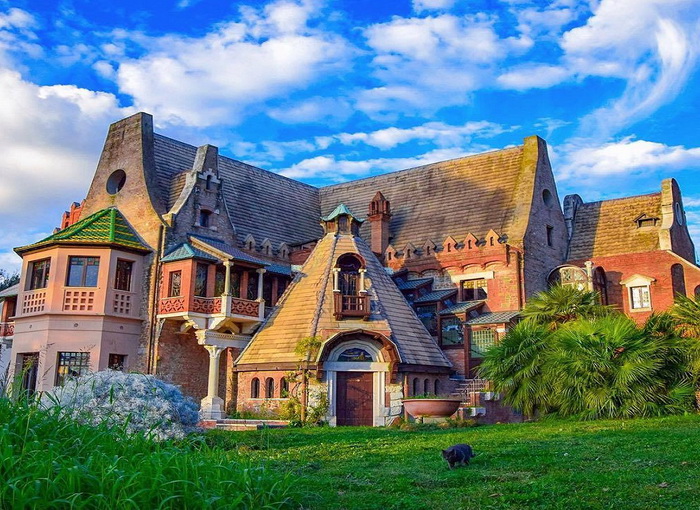
Useful information
Villa Torlonia park museums are open everyday from Tuesday to Sunday
09:00 AM – 07:00 PM
Musei di Villa Torlonia (English website)
Inside Villa Torlonia, there are two historical buildings now serving as museums.
Along with the Museum of the Casina delle Civette, the 19th-century Casino Nobile accommodates the Museum of the Villa and the Roman School’s art collections.
Below the Villa, there is another place worth visiting: the bunker of Villa Torlonia.
A place of great historical value, as it was the last residence of Benito Mussolini.
The museum includes three bunkers, one of which even featured telephones and an efficient ventilation system!
The anti-aircraft bunker dates back to 1942-43 and is the most important of its kind in Italy, as more than seventy years later, reminds us of one of history’s darkest pages.
The bunkers can only be visited by appointment, by a maximum of 15 people.
The guided tour has a duration of one hour and costs 10 euros per person.
2 | The Small Dome and the Purgatory Souls museum
On the Lungotevere Prati, in the heart of Rome, a small church with a neo-Gothic façade stands out and reminds us of the Duomo in Milan.
It is the Church of the Sacro Cuore del Suffragio, also known as the Piccolo Duomo. The spires, the portals, the rose window make this church a jewel in Rome’s city centre. And what about that elegant, slim octagonal bell tower?
The construction dates back to 1893, but the church opened to the public in 1917.
Internally, it shows three naves, each featuring six spans, crowned by a groin vault and separated by pointed arches resting on compound pillars with sculpted capitals.
This church sacristy also hides another world worth discovering, an experience not to be missed that will leave you speechless: welcome to the Museum of the Souls in Purgatory. This place brings with it a mysterious history.
Shortly after its construction, in 1890, a fire broke out in the small chapel dedicated to the Virgin of the Rosary. The traces left by the flames, behind the altar, left behind the outline of an unfortunate person.
Victor Jouët, the church landowner, believed it to be the sign of a soul in purgatory wishing to make contact with the living.
He travelled around Europe in search of other similar testimonies to give life to this original museum, now featuring handprints on clothes, pillows, and many other relics that seem so real and are deeply disturbing.
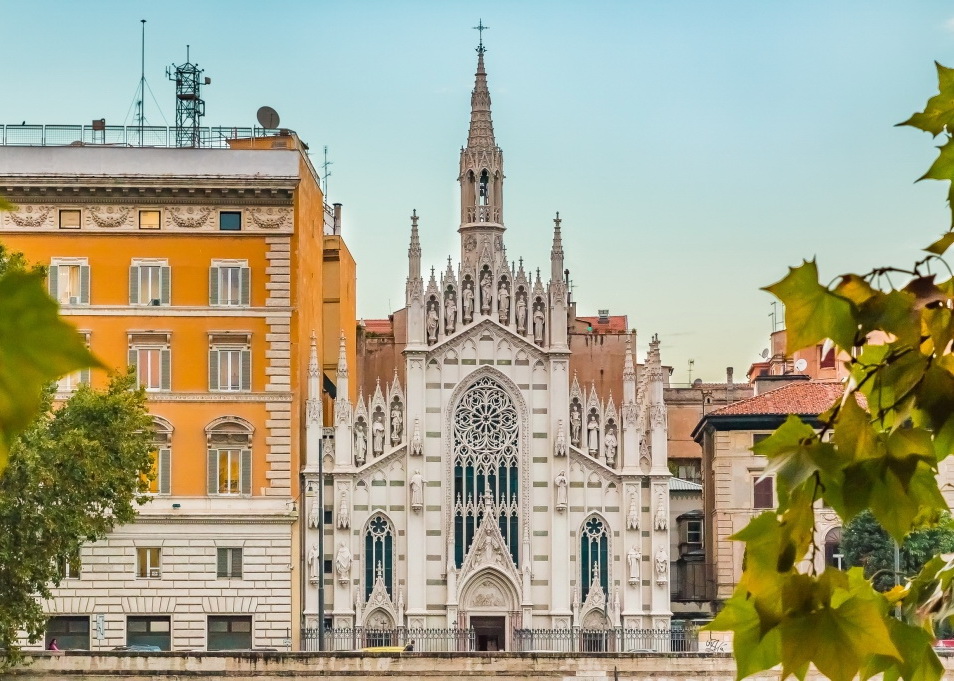
Useful information
The church rises between Via Ulpiano and Via Paolo Mercuri, near the Palace of Justice.
3 | The Haunted Rome
Rome is one of the world’s capitals of faith, but the Holy City hides some dark secrets and creepy places.
This magical and rather noir side hides legends, stories, and mysteries and represents Rome’s darkest and most fascinating aspects.
Come with us and discover the most disturbing and surprising places in the city, with our guided walking tour through Rome’s Ghosts and Mysteries.
Carrani tour – Gray Line I Love Rome – will immerse you in a magical experience, walking through the city centre and discovering fascinating and suggestive mysteries.
Starting from Castel Sant’Angelo, you will know everything about Rome’s most famous ghost – the noblewoman Beatrice Cenci, whose story inspired Guido Reni his paintings, P.B.Shelley his tragedies, and Dumas or Stendhal their novels.
After crossing Via del Governo Vecchio, the tour arrives at Piazza Pasquino, home to the famous talking statues. It then continues towards Piazza Navona, Piazza della Minerva, Largo di Torre Argentina, and ends at Piazza Mattei, but not before crossing the famous Piazza del Pantheon.
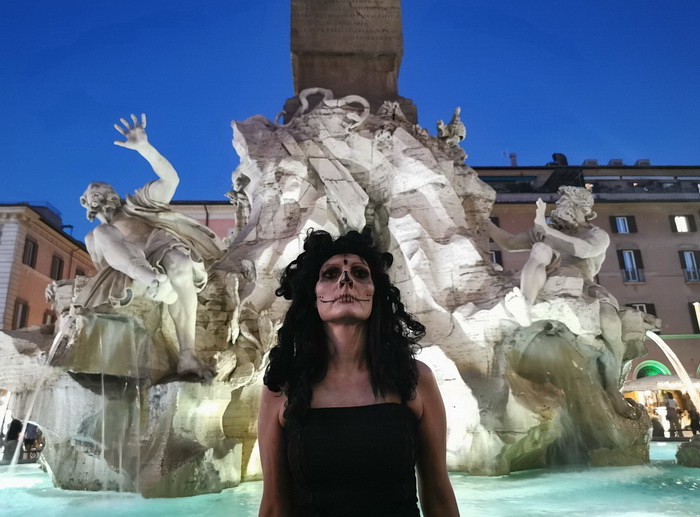
You may purchase the Ghosts Tour as a single tour option (click here), in combination with a 24-hour Gray Line I Love Rome Open Bus Hop on Hop off ticket (click here) or in a package that includes a 4-day stay in Rome and accommodation in a charming 4-star central hotel (click here).
4 | The Catacombs of Rome and the Holy Staircase
The Catacombs represent Rome’s most hidden and ghostly soul.
Covered under centuries worth of history layers, a vast network of tunnels – dating back to the 2nd century AD – stretches in the underground city centre of Rome.
When the emperor Nero tortured the Christians, these tunnels rapidly became a burial site, a place of refuge but also celebration.
Make sure to visit the site of San Callisto (Via Appia Antica, 110/126), San Sebastiano (Via Appia Antica, 136), Priscilla (Via Salaria, 430), and Domitilla (Via delle Sette Chiese, 282).

Reserve your post in the guided tour of the ancient Basilicas and Catacombs of Rome made by Carrani Tours – Gray Line I Love Rome and immerse yourself in the city’s most ancient history.
Explore the ancient Roman Catacombs and walk along the Appia Antica, one of the most ancient roads ever!
You will discover the wonders of the Basilica of San Giovanni in Laterano, the Catacombs of San Callisto, the Basilica of Santa Maria Maggiore, and the Scala Santa, a place of faith and mystery: 28 steps of white marble with grey veins, recently restored and reopened to the public.
According to Catholic tradition, this staircase led to Pontius Pilate’s praetorium in Jerusalem. That same staircase where Jesus set foot during his Passion (Click here to book your Tour).
5 | Street Art in Tor Marancia
The Big City Life urban art project in Tor Marancia is one of the most photographed and visited projects in the world: 22 international street artists have redeveloped and transformed, with their works, 22 façades of the Roman suburb Lot 1, a few steps from the Garbatella neighbourhood. The project started in 2015 and has no equals.
New additions have been enriching it over the years, making Rome one of the modern European capitals of street art.
Conceived by 999Contemporary, this exhibition represented Italy at the 15th Architecture Exhibition of Venice Biennale.
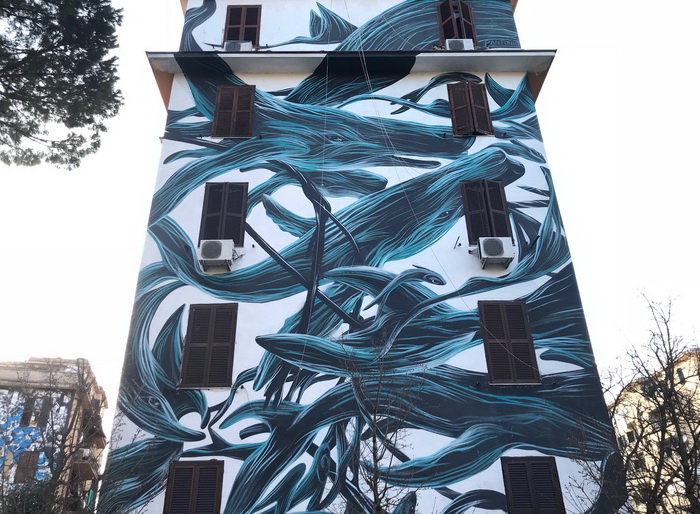
Discover the Tor Marancia condominium museum with Carrani – Gray Line I Love Rome tour (click here)!
Immerse yourself in the urban art soul of the Italian capital!
An expert local guide will show you the best this area has to offer, so get ready to walk, wear comfortable shoes and don’t forget your camera!
The tour costs 20 euros per person and is free for children/teenagers up to 17 years old. The activity includes a professional guide in Italian (and English, on request).
The walking tour departs on Saturdays and Sundays at 10:00 AM. The group will meet with the guide at the Museo Condominiale di Tor Marancia (Viale Tor Marancia, 63).
6 | Rome’s Historic Shops
Butcher shops, bakeries, wine shops, fishmongers, pastry shops, ice cream parlours, greengrocers, delicatessens, tea, and spice shops.
A teeny tiny world within the city that holds a big part in our daily lives.
We purchase our daily goods, confident to spot the highest-quality produce we need.
Among the many shops scattered through the alleys, streets and squares of the capital, some of them will drag you into the authentic Roman atmosphere.
The Financial Times recently published a list of the world’s best food shops, and two spots in Rome earned their place in the ranking.
The first is “Beppe e i suoi formaggi” (Beppe and his Cheese), a shop in Via di S. Maria del Pianto 9A/11, opened in 2008 by Beppe Giovale.
His ancestors had already been making cheese in the Susa Valley, in the summer mountain pasture Col du Petit Mont-Cenis since 1600.
According to the Financial Times, “their goats, sheep and rare breed cows produce spectacular cheese that includes primosale, ricotta, as well as top-quality cured meats, wine, and pasta.”
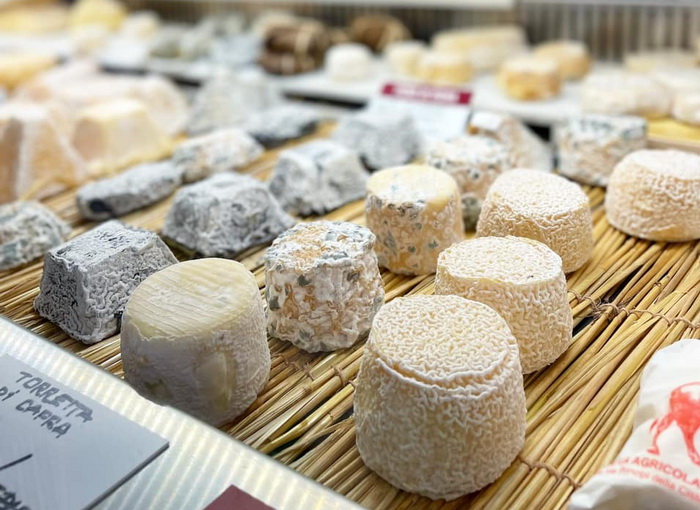
The Roscioli Ristorante Salumeria in Via dei Giubbonari 21 is definitely worth mentioning: a food boutique where “the selection of cured meats and cheese, both Italian and non-Italian, is unrivalled.
A sophisticated and modern wine selection majestically accompanies the packaged foods on sale: from Cantabrian anchovies and gourmet tuna to vegetables in oil and classic Roman pasta kits, be prepared to get hungry.
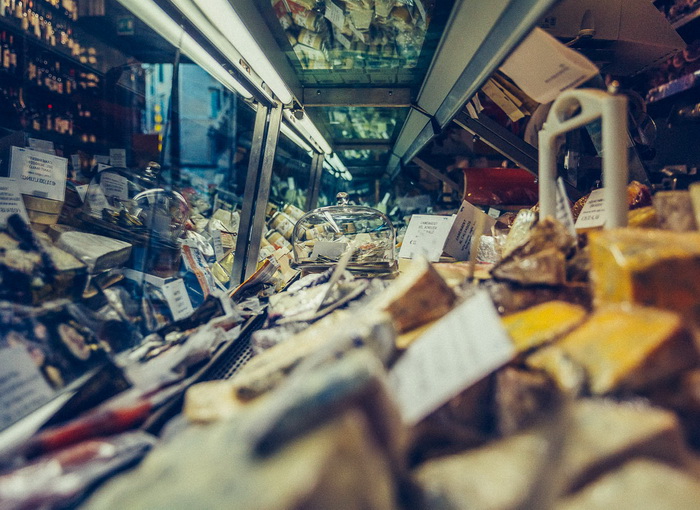
7 | The House of Monsters at Palazzo Zuccari
Palazzo Zuccari definitely catches the eye among the most unusual and frightening buildings in Rome.
It is also known as La Casa dei Mostri (the House of Monsters).
You may find it in Via Gregoriana 30, a few steps from the church of Trinità dei Monti.
Federico Zuccari, painter and art critic who lived there at the end of the 16th century, commissioned this building.
The inspiration came from the Park of Monsters in Bomarzo, which fascinated him to the point that he wanted his residence to show some gaping, frightening mouths on the doors and windows.
Whoever steps in has the impression of entering the gates of Hell and feels amazement and fear at the same time.
Over time, the Palazzo had different owners, like the Queen of Poland or Christian nuns.
In 1904 Palazzo Zuccari was purchased by Henriette Hertz, who later donated it to the German Government.
She had a three-story building erected in place of the garden.
The building, even years after her death, still features the Biblioteca Hertziana, named after her.
Gabriele D’Annunzio, who visited her often, immortalised it in his novel ‘Il Piacere’ in 1905. The Biblioteca Hertziana is still in use today and was expanded in 1963 by the new owner of the Maxplank company.
8 | Little London
A piece of London hides amidst the alleys of Rome.
In Via Bernardo Celentano, a street connecting Via Flaminia to Via Vignola, Victorian wrought-iron street lamps, post boxes on railings and six stone steps leading up to the doors make up the perfect Portobello Road atmosphere.
Everything is in perfect British style: 26 terraced houses in a 160-metre-long street of cobblestones.
The origins of the street date back to 1909.
The newly elected mayor of Rome, the Anglo-Italian Ernesto Nathan, taking inspiration from the other European cities, decided to innovate the city’s architecture.
He reached out for Quadrio Pirani, an architect from Jesi who had already worked on other city’s areas, such as San Saba and Testaccio, commissioning the building of Little London in the Flaminio neighbourhood.
The street is private today, cars are not allowed in, but people are!
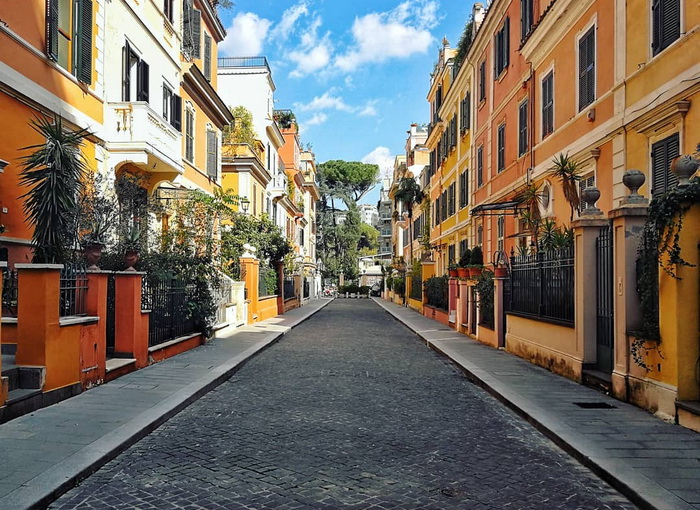
9 | Quartiere Coppedè
In the heart of Rome, a stone’s throw from the historic centre, lies one of the city’s most characteristic neighbourhoods, a little off the beaten track: the Coppedè district.
This area features a surprising and grotesque mix of Art Nouveau, Art Deco, flashes of Greek, Gothic, Baroque and medieval art.
26 buildings and 17 small villas separate the Parioli, the Salaria and the Nomentana areas.
A richly decorated archway connecting the ambassadors’ palaces serves as the official entrance to this corner, featuring a huge wrought-iron chandelier.
The district was built between 1915 and 1927 by the eclectic architect Gino Coppedè, from whom it takes its name, and was completed by his son-in-law Paolo Emilio Andrè, after his death.
The two most important buildings are the Palazzina del Ragno – of Assyrian-Babylonian inspiration, and the Villino delle Fate.
In the centre of the district, the Fountain of Frogs is an imposing fountain populated by 12 frogs, famous for the bath that the Beatles took in it after a concert held in the nearby famous Piper disco.
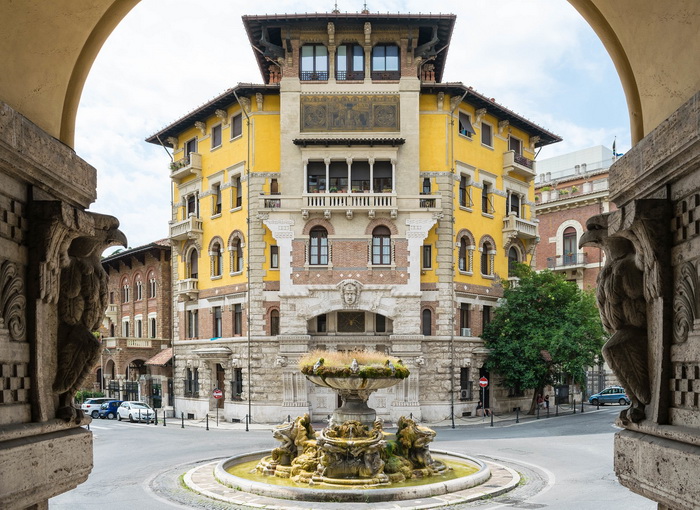
10 | Via Piccolomini
No trick, no mysteries here.
Simply perspective deceiving and fooling the eye.
A few steps away from the Vatican, an extravagant optical effect is the main star of Via Piccolomini, in the Aurelio district.
We are obviously talking about the 136-metres-high Dome of St. Peter’s Basilica, designed by Michelangelo.
Got an explanation for this phenomenon?
As you walk along this street, the closer you get, the further away the Dome seems to get.
This happens because of the buildings on both sides of Via Piccolomini. In the first 50 metres of the street, the eye can only see the dome, in all its grandeur.
Continuing along the street, instead, we perceive the space differently because, proceeding and passing along the buildings, the sky remains the only element wrapped around the dome.
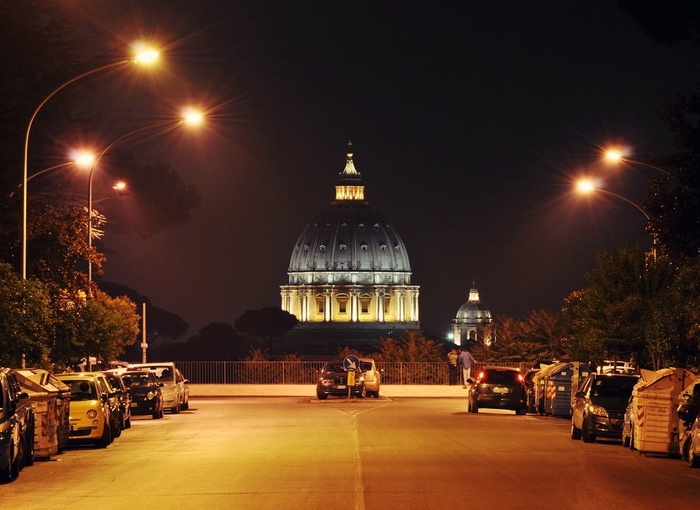
Yes. We know that the secret is now out there, but we can assure you that Via Piccolomini is an experience that you cannot miss when in Rome!
Rome as even locals ever saw or lived, just awaits you to be explored and loved in all its grandeur! What are you waiting for?
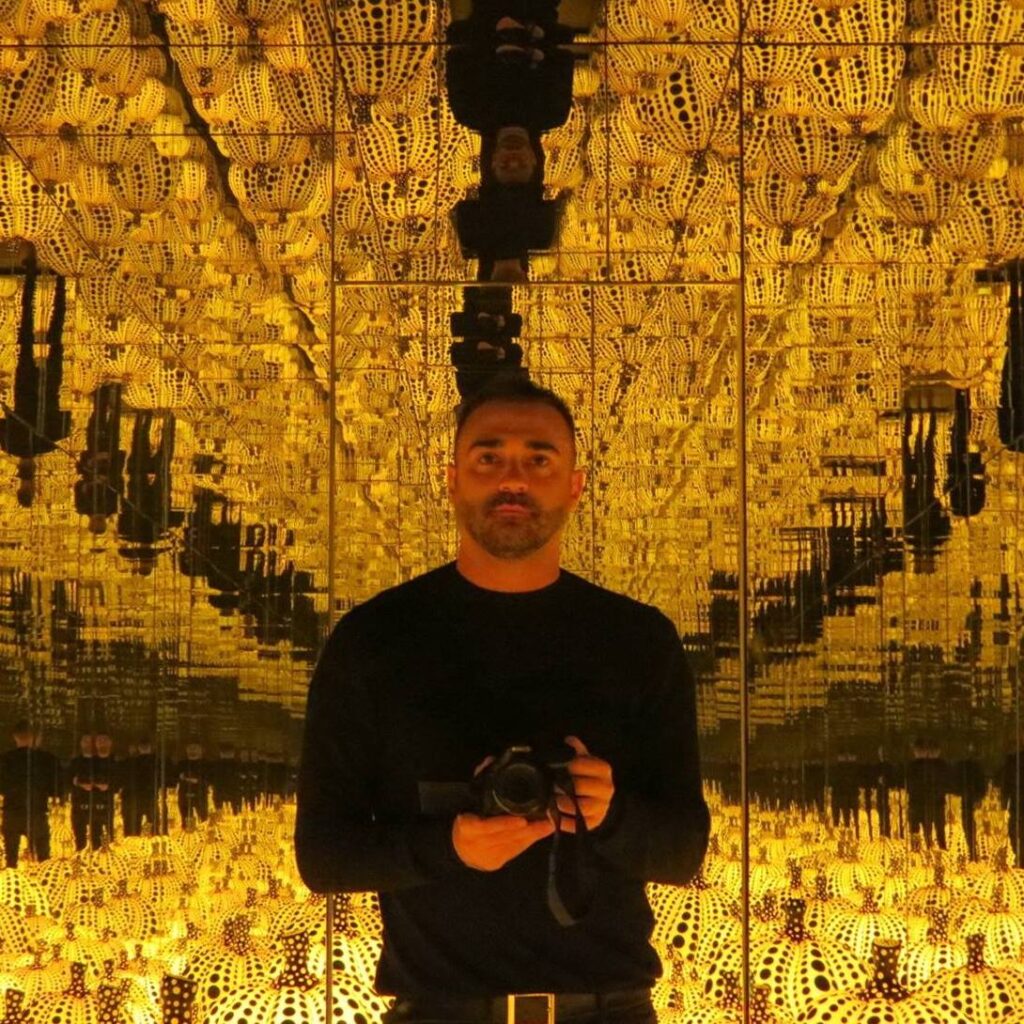
Italian article by Mauro Orrico
Born in the beautiful Salento area of Apulia, but raised with love in Rome, Mauro Orrico graduated in Political Science at Università La Sapienza.
He also has a Master in International Protection of Human Rights.
He worked with Rai3, Rai Educational and La7d.
He has been organizing electronic music and independent culture events for 16 years and in 2014 he founded FACE Magazine.it , which he directs.
Translated into English by Micol Dionisi